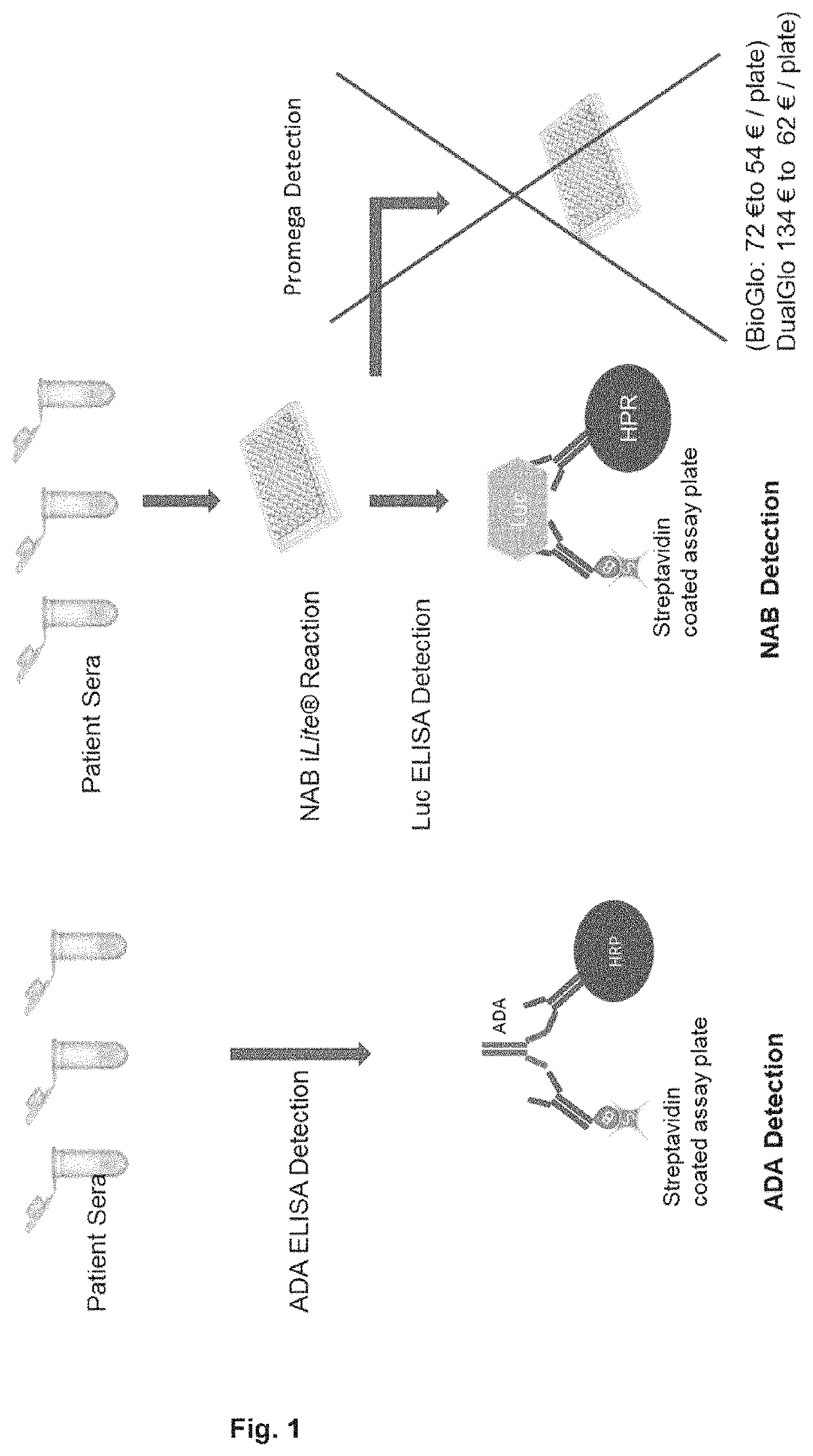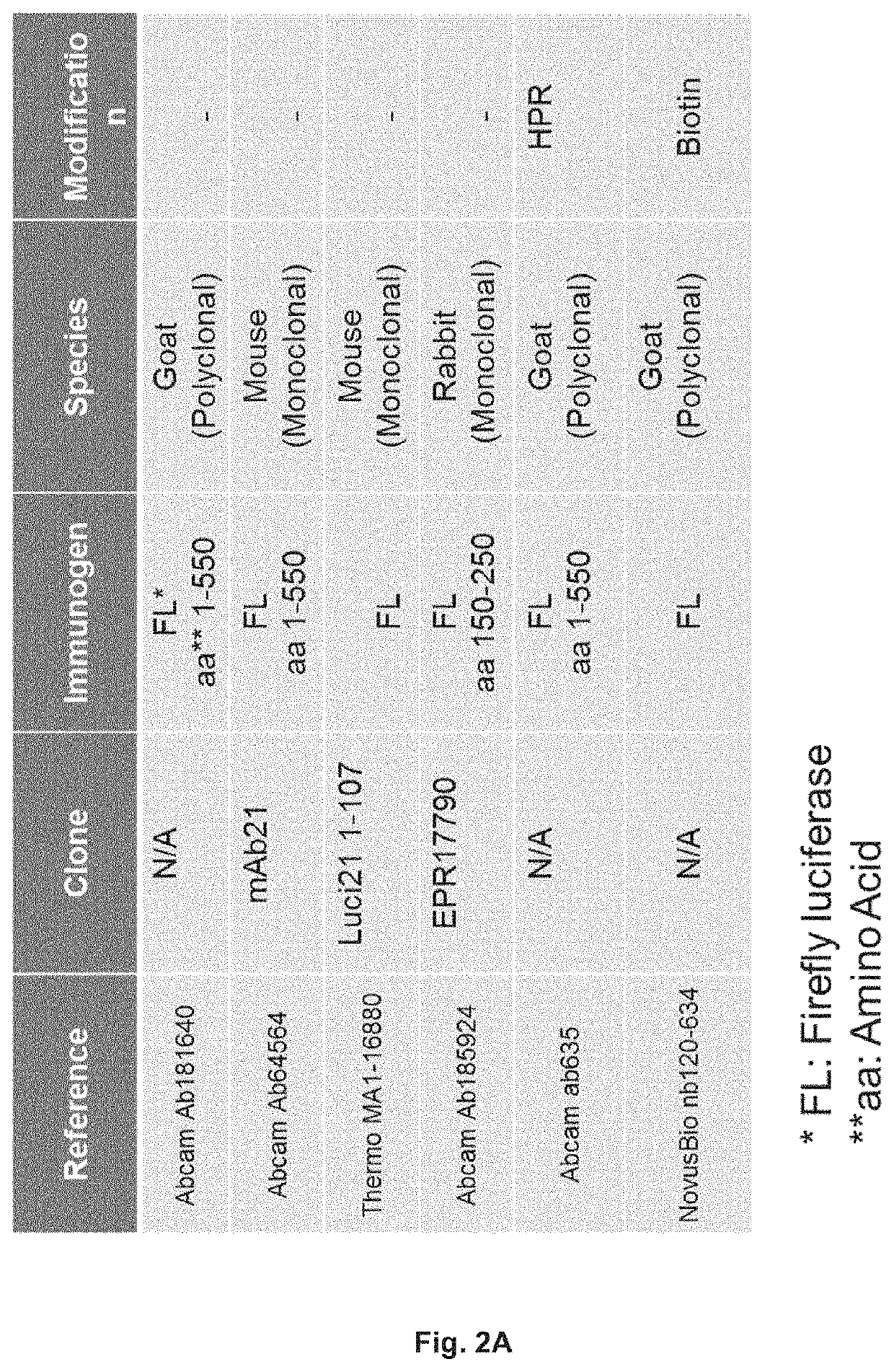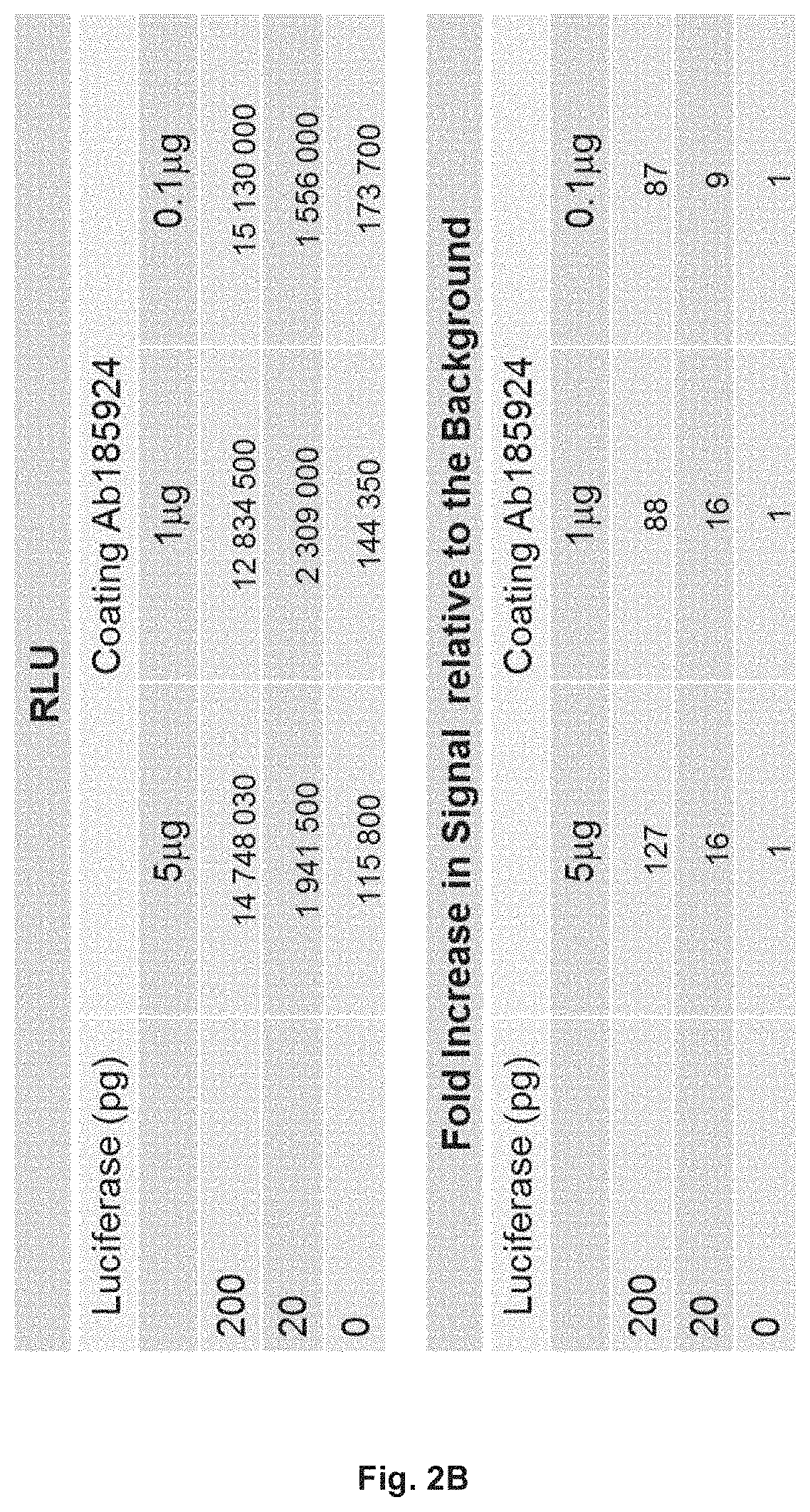System for the adaptation of cell-based assays for analysis on automated immuno-assay platforms
a cell-based assay and automated immunoassay technology, applied in the direction of animals/human proteins, receptors of cytokines/lymphoines/interferons, animals/human proteins, etc., can solve the failure of patients to respond to therapy, allergic reactions, severe autoimmune reactions, etc., and achieve the effect of being easily measured
- Summary
- Abstract
- Description
- Claims
- Application Information
AI Technical Summary
Benefits of technology
Problems solved by technology
Method used
Image
Examples
example 1
[0133]The bridging ELISA in which a drug (small molecule, peptide, or biopharmaceutical) is detected by the formation of a bridge between the drug, and one molecule of an antibody (monoclonal or polyclonal) directed against one epitope of the drug attached either directly to a solid surface, usually a 96, or 384-well micro-titer plate, or an antibody (monoclonal or polyclonal) directed against one epitope of the drug labelled with biotin that it is turn bound to a streptavidin coated surface, usually a 96, or 384-well micro-titer plate or streptavidin coated bead, and another molecule of an antibody (monoclonal or polyclonal) directed against a second epitope of the drug labelled with horse radish peroxidase (HRP) or another suitable marker is used widely for the quantification of the level a drug (FIG. 1). Similarly, the presence of anti-drug antibodies in a sample can be detected by the formation of a bridge between two molecules of the drug and one molecule of an antibody (monocl...
example 2
[0136]The Gyros platform technology is based on the use of centrifugal control of capillary action using a CD engineered to incorporate nanoliter microfluidics and a detection system based on laser activated fluorescence. Immunogenicity assays using the Gyros platform are based on a bridging ELISA in which anti-drug antibodies are detected by the formation of a bridge between two molecules of the drug labelled with biotin and another molecule of the drug labelled with a florescent marker such as Alexa-647 (FIG. 6). The presence of anti-drug antibodies in a sample will form a bridge allowing the Alexa labelled drug molecule to be bound to the biotin labelled drug molecule that it is turn bound to a streptavidin coated bead. The fluorescence emitted by the Alexa labelled bound drug is then quantified following activation with a laser. Alternatively, the potency of a therapeutic antibody may be quantified using an anti-drug antibody pair, specific for the therapeutic antibody, labelled...
example 3
[0138]The MSD platform technology is based on the use of electrochemiluminescence and a detection system based on a Sulfo-Tag labelled antibody that detects an analyte bound to a capture antibody that is in turn bound to a carbon or gold coated 96-well plate with an embedded electrode. Immunogenicity assays using the MSD platform are based on a bridging ELISA in which anti-drug antibodies are detected by the formation of a bridge between two molecules of the drug consisting one molecule of which is labelled with biotin bound to a streptavidin coated gold plate and another molecule of the drug (a monoclonal or polyclonal therapeutic antibody) with a Sulfo-Tag (FIG. 11). The presence of anti-drug antibodies in a sample will form a bridge allowing the Sulfo-Tag labelled drug molecule to be bound to the biotin labelled drug molecule that it is turn bound to a streptavidin coated plate. The light signal emitted by the Sulfo-Tag labelled bound drug is then quantified. Alternatively, the p...
PUM
| Property | Measurement | Unit |
|---|---|---|
| concentrations | aaaaa | aaaaa |
| concentrations | aaaaa | aaaaa |
| concentration | aaaaa | aaaaa |
Abstract
Description
Claims
Application Information
 Login to View More
Login to View More - R&D
- Intellectual Property
- Life Sciences
- Materials
- Tech Scout
- Unparalleled Data Quality
- Higher Quality Content
- 60% Fewer Hallucinations
Browse by: Latest US Patents, China's latest patents, Technical Efficacy Thesaurus, Application Domain, Technology Topic, Popular Technical Reports.
© 2025 PatSnap. All rights reserved.Legal|Privacy policy|Modern Slavery Act Transparency Statement|Sitemap|About US| Contact US: help@patsnap.com



